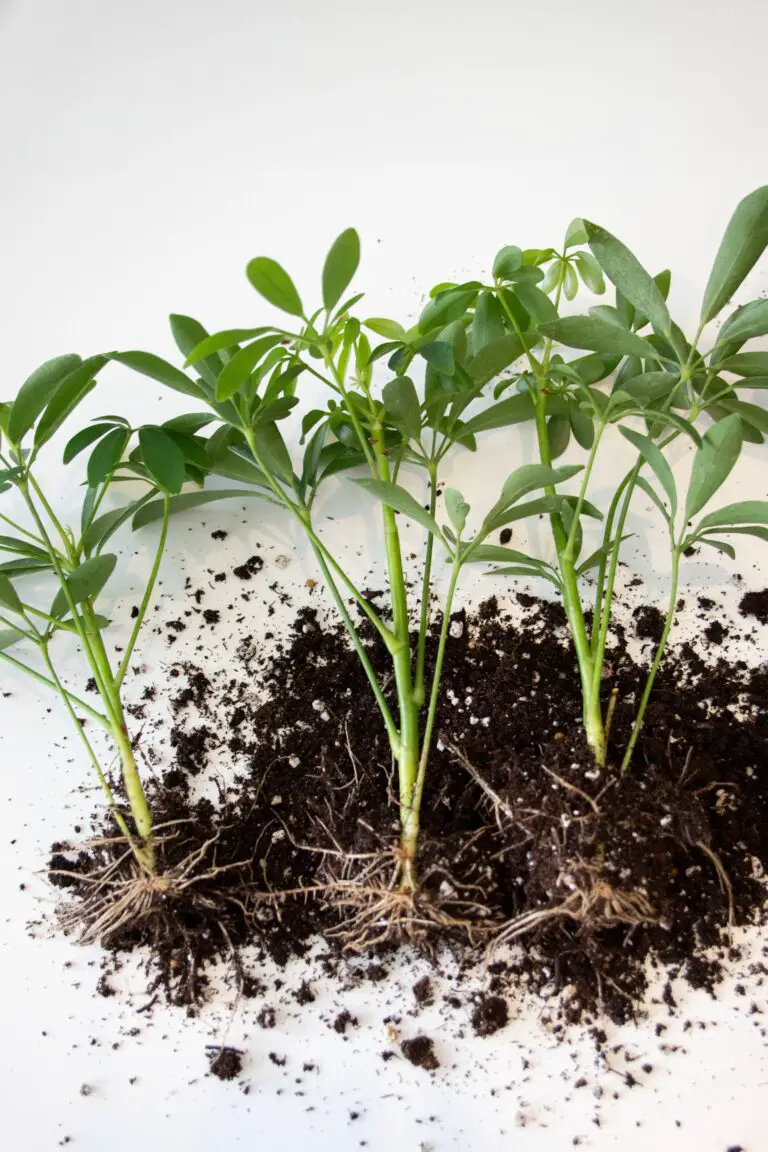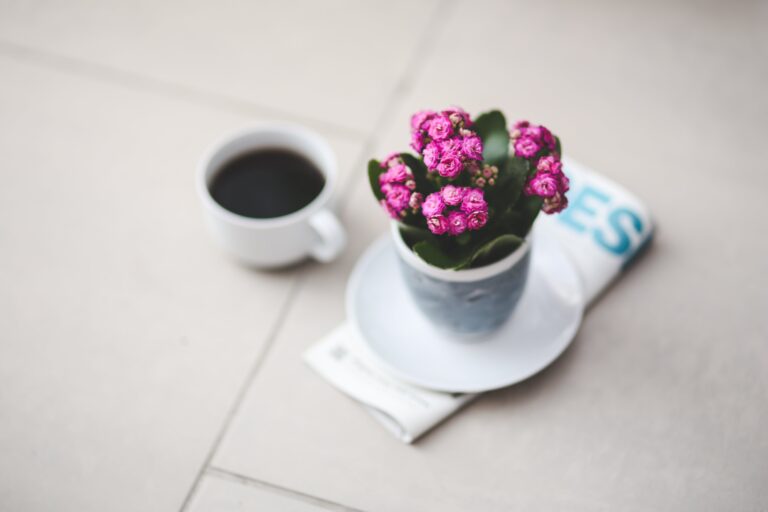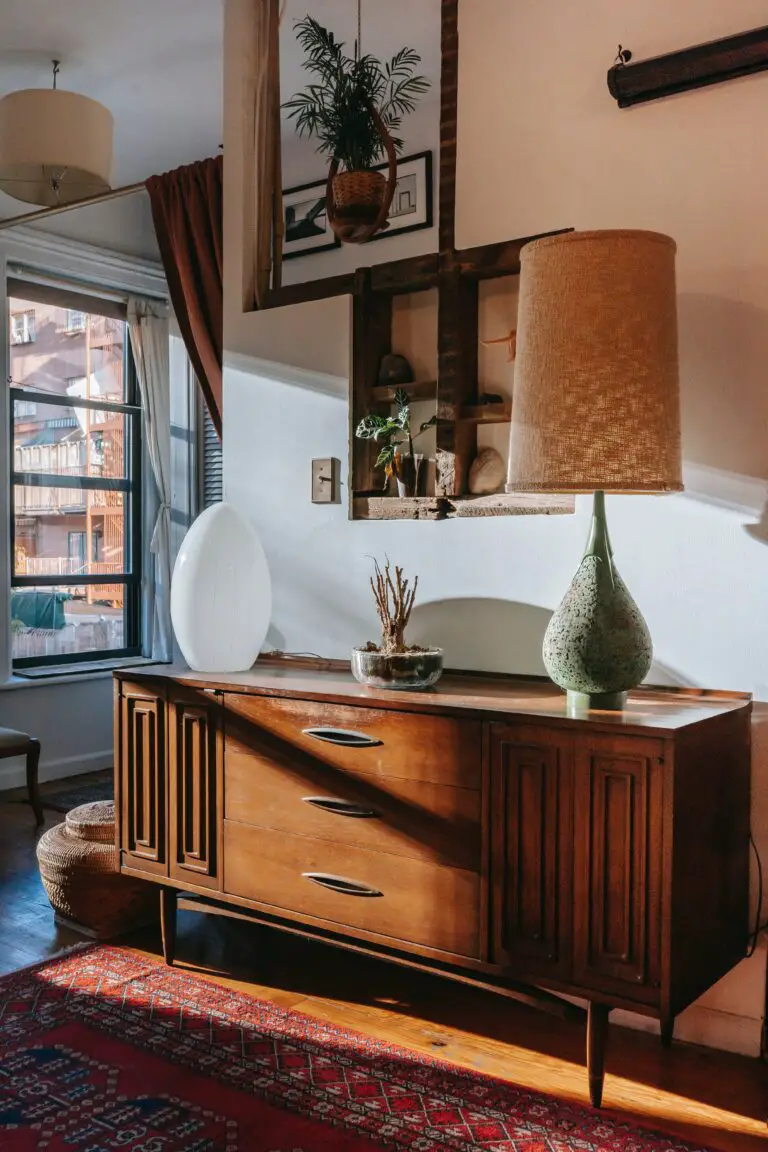Discover the Velvet Touch of Kalanchoe Tomentosa
Welcome to the tactile world of Kalanchoe tomentosa, the Panda Plant, whose velvety leaves beckon a touch as inviting as a lush, soft blanket. This section invites you on a sensory journey through the key features that make this succulent a bewitching addition to any plant collection or home decor.
The allure of the Panda Plant extends far beyond its velvety foliage; it’s a tapestry of charm with each leaf, a marvel graced by Mother Nature. Seasoned growers and novices alike find a certain magnetism in the panda plant’s visual aesthetics — its shades of silvery-green are artfully edged with soft brown markings, reminiscent of a panda’s embrace.
But it’s not just about looks; the tactile sensation of running your fingers over the leaves’ downy surface is reassuringly calmative, evoking a connection with the natural world that’s often lost in the hustle of urban living. Admire these succulents up close and personal through this guide to optimal succulent care, and notice how each furry leaf stands as a testament to the Panda Plant’s hardiness and resilience.
Real-life enthusiasts of kalanchoe tomentosa are often spellbound upon receiving one of these beauties as a gift or when stumbling upon a cluster at a local nursery. It’s not just a plant; it’s a piece of living art that continues to enchant and inspire. Dive deeper by watching the video below and see how those who’ve welcomed this succulent into their homes thrive alongside their green, textured companion.
Mastering Kalanchoe Tomentosa Cultivation and Care
Welcome to the world of Kalanchoe tomentosa, or as it’s more affectionately known, the Panda Plant. Not only is this succulent an absolute charm with its fuzzy foliage, but it also boasts an easy-going attitude when it comes to care. Let’s dive into the essentials of nurturing these delightful plants to perfection.
The Sunlit Stage
Lights, camera, action! Imagine your Panda Plant as a star in the garden, thriving under the spotlight of the sun. Optimal lighting conditions are akin to a day well spent basking in the warmth of morning rays, followed by the gentle embrace of afternoon shade. Finding that sweet spot of light is crucial—not too intense to prevent a scorching performance, yet bright enough to keep the show going.
Consider the story of Martha, a seasoned plant enthusiast, who found the perfect nook by her east-facing window. Her Kalanchoe tomentosa flourished, the silver-green leaves with their chocolate-brown margins performing a splendid dance under the filtered sunlight. If you’re inspired by Martha’s success, be sure to check out this guide for more tips on finding the optimal lighting for your Panda Plant.
Irrigation Insights
Watering practices for Kalanchoe tomentosa are less ‘waterfalls’ and more ‘morning dew’. The key is to let the soil dry out between watering extravaganzas. Imagine you’re on a desert safari, conserving water and mimicking the arid habitats these succulents adore. Overwatering? A definite no-go. You wouldn’t want to drown the roots and dampen the spirits of your Panda Plant.
Take a cue from Oliver’s experience. By sticking his finger into the soil, he discovered whether his Panda Plant was ready for another drink or still savoring the last one. As simple as this technique seems, it’s the secret handshake between you and your succulent, ensuring a long-lasting friendship. Interested in digging deeper? Find a treasure trove of watering wisdom right here, an internal resource that’s a drink of knowledge for any plant caretaker.
The Temperature Tango
When it comes to temperature preferences, Kalanchoe tomentosa enjoys a little wiggle room. They’re not after a tropical getaway, nor are they looking for a winter wonderland. Room temperature, ranging from the cool 60°F (15°C) to the cozy 75°F (23°C), sets the stage for a perfect climate cha-cha that keeps your Panda Plant jiving in delight.
Picture Jeff’s living room, where his collection of Panda Plants experiences the rhythm of the seasons without the stress of extreme temperatures. By keeping his green buddies away from drafts and direct heat sources, he’s mastered the temperature tango, allowing these fuzzy fellows to grow in harmony.
With these care highlights in mind, you’re now better equipped to take on the role of devoted caretaker to your Kalanchoe tomentosa. Remember, it’s all about the simple pleasures of the right light, the occasional water, and the comforting climate. May your green thumb flourish as you nurture these charming plants to their fullest potential!
Planting Perfection: The Ideal Soil Mix for Panda Plants
When it comes to nurturing your Kalanchoe tomentosa, also fondly known as the Panda Plant, the soil you choose is a VIP guest at the plant care party. Just imagine: you wouldn’t wear flip-flops to hike Mount Everest, right? Similarly, your Panda Plant needs the right “shoes”—a soil mix that caters to its unique needs.
This furry friend hails from the granite hills of Madagascar, and it loves to bask in well-draining soil that mimics its native environment. Think of your Panda Plant like a succulent supermodel that prefers a runway of rocky, aerated soil over a soggy, clumpy catwalk any day.

So, let’s roll up our sleeves and blend the ultimate soirée for our Panda Plant’s roots. A concoction of one part potting soil, one part coarse sand, and one part perlite or pumice is the cocktail of choice. It’s like preparing a gourmet meal; each ingredient complements the others to create the perfect balance of flavor—or in our case, texture and drainage.
Anecdotes from seasoned plant enthusiasts reveal that Kalanchoe tomentosa thrives in a Mediterranean-style mix, slightly more porous than your average Joe soil blend. If you’ve got a flair for the creative, you can even add a dash of gravel or small pebbles to the mix. It’s not just practical, it’s aesthetics 101 for soil composition—like adding sprinkles to your cupcake!
For those deeply rooted in the digital age, a quick browse online
reveals a depth of knowledge about the ideal growing conditions of these fuzzy favorites. However, don’t just stop there; marvel at the plethora of succulent wisdom and tips awaiting you at our very own Ultimate Guide to Succulent Soil for chic and cheerful plant growth.
Dive into the experience, get your hands dirty, and feel the satisfying crunch of perfectly proportioned soil beneath your fingers. The result? A radiant Kalanchoe tomentosa that’s as robust as it is regal, standing proud in its perfectly tailored soil ensemble.
The Art of Propagating Kalanchoe Tomentosa
Isn’t there just something magical about watching a small leaf transform into a lush, full-fledged plant? Propagating Kalanchoe tomentosa, also affectionately known as the Panda Plant, is not only a rewarding experience but also a fascinating journey into the wonders of plant biology! Let’s roll up our sleeves and delve into the easy yet thrilling task of turning a solitary leaf into a thriving succulent.

First things first, select a healthy-looking leaf from your Kalanchoe tomentosa. Imagine you’re picking out the MVP of your garden team—this little guy is about to start its solo career. Gently twist the leaf off; it’s akin to plucking a ripe apple from a tree. A clean break is essential, so if it doesn’t give way with a slight twist, use a clean pair of scissors to make a precision cut.
Now for the fun part—after you have your leaf, it’s all about the waiting game. Place the leaf on a bed of well-draining soil and play the role of the patient gardener. Resist the urge to water it immediately. Like a fine wine or an artisanal cheese, it needs time to develop. Only after a few weeks, when you spot tiny roots searching for soil, should you give it a modest dose of water. Think of it as rooting for your roots!
As you watch your Kalanchoe tomentosa leaf sprout and grow, you’ll understand the delight of plant propagation. It’s not just about growing plants; it’s about growing patience, care, and a green thumb. So, keep a keen eye on your leaf-cutting, providing it with the occasional sip of water, and soon you’ll be the proud parent of a new Panda Plant, ready to stand tall among its siblings in your succulent collection.
Troubleshooting Common Issues with Panda Plants
Kalanchoe tomentosa, affectionately known as the Panda Plant, brings a plush touch to any plant collection. But just like any cherished pet, it can sometimes fall under the weather. If you notice your Panda Plant looking less than perfect, don’t fret. Let’s play plant detective and get to the root of the matter!

First off, if you’ve spotted some unwanted creepy crawlies making themselves at home on your plant, it’s time to sound the alarm. Pest invasions can range from the sneaky aphids to the more brazen mealybugs. These tiny intruders are notorious for sapping the strength from your Panda Plant’s succulent leaves, leading to discoloration and stunted growth. But fear not! A simple solution is a spray of neem oil or a gentle wipe down with a soft cloth soaked in soapy water. It’s like sending in the cleaning crew to rescue your fuzzy green friend from unwanted guests.
Playing Doctor: Diagnosing Diseases
When your Kalanchoe tomentosa looks like it’s in a slump, disease could be the culprit. Overwatering is often the villain behind root rot, leaving the roots weaker than a kitten’s meow. The key here isn’t just to cut back on the agua; you need a well-draining soil mix that’s as supportive as your best bud after a rough day. And let’s not forget about good ol’ airflow, which can be the breath of fresh air your Panda Plant needs to fight off fungal foes.
Picture this: You’ve done everything by the book, but still, those lower leaves start yellowing faster than a banana in the sun. It’s a classic symptom that your Panda Plant isn’t just experiencing the blues; it could be suffering from a nutritional deficiency. A balanced fertilizer can act like a vitamin boost—think of it as getting your green amigo on a health kick, packed with all the good stuff to restore those lush, velvety leaves.
Now, let’s talk about your indoor climate. Just because your Panda Plant isn’t shivering doesn’t mean it’s comfy cozy. Too much direct sunlight is like a bad day at the beach—sunburn is real for plants, too! Ensure your Panda Plant gets plenty of light, but in a spot where the rays are as gentle as the brush of a kitten’s fur. After all, nobody wants a crispy plant.
Remember, growing Kalanchoe tomentosa should be a joy, not a jigsaw puzzle of problems. With the right care and a little troubleshooting savvy, you can keep common issues at bay and help your Panda Plant thrive!
Beyond the Ordinary: Unique Varieties of Kalanchoe
Imagine a tapestry woven with vibrant greens, blush pinks, and silvery hairs. This isn’t a fantasy, it’s the reality of growing unique Kalanchoe tomentosa relatives. Each variety, much like distant cousins at a family reunion, shares traits with the beloved Panda Plant but brings its own splash of color and texture to the succulent scene.
Take, for example, the charming Kalanchoe beharensis, also known as ‘Felt Bush’ or ‘Elephant’s Ear.’ Its triangular leaves form a stark contrast to the plush, soft leaves of Kalanchoe tomentosa. But don’t be fooled by appearances, as they both crave similar care: bright sunlight, well-draining soil, and minimal watering. It’s like finding out your great-aunt and you both enjoy hiking – different, yet wonderfully the same.
Or might you fancy the Kalanchoe pumila, with blooms that dance in a spray of delicate pink flowers? This gem adds a whimsical touch that’s hard to replicate. While Kalanchoe tomentosa doesn’t blossom as readily indoors, pumila steps up to delight with its floral show, starkly contrasting the tomentosa’s velvety demeanor.
And let’s not overlook the ‘Chocolate Soldier,’ a variant of Kalanchoe tomentosa itself! With edges kissed by the color of cocoa, it’s as if each leaf has been carefully dipped in a confectioner’s kitchen. Caring for this chocolatey twist involves sheltering it from enthusiastic summer rays to prevent scorching – a bit like making sure your favorite chocolate bar doesn’t melt in the sun.
Embracing these unique varieties of the Kalanchoe family can be an adventure akin to exploring the diverse personalities within one’s own lineage. With thoughtful attention and a nurturing touch, you’ll find that growing these succulents is both rewarding and full of surprises – like bonding with a cousin you’ve just met at that family reunion. Who knew succulents could be so reminiscent of our own family dynamics?
Decorating with Kalanchoe Tomentosa: Aesthetic Tips for Plant Lovers
The Kalanchoe tomentosa, affectionately known as the Panda Plant, brings more than just greenery to a room; it’s a statement piece that can anchor any décor style. Beyond its velvety leaves and easy-care spirit, the Panda Plant can elevate the aesthetics of your living space with the right styling tips.

Imagine your Kalanchoe tomentosa perched on a mid-century modern sideboard, where its unique texture provides a striking contrast against the smooth wood finish. The Panda Plant is not just a living organism; it’s art! Place it in a geometric planter to complement a contemporary setting, or opt for a handmade earthen pot to bring warmth to a rustic space.
For those who love to create a whimsical and enchanting vibe, hanging terrariums featuring Kalanchoe tomentosa can turn any corner into a fairy tale setting. Picture it in your reading nook, alongside stacks of books and a cozy chair, transforming the area into a sanctuary of relaxation and greenery.
If you are someone who appreciates the minimalist approach, let the Panda Plant be the protagonist of your space. Set it atop a Scandinavian-style coffee table, paired with a simple couch, and let its fuzzy foliage become the space’s visual centerpiece. But who says Kalanchoe tomentosa is just for the indoors? Take it outside to your balcony or patio, placing it among soft-textured potted plants for a harmonious mix.
It’s not all about the pot and the spot. Accessorizing around your Kalanchoe tomentosa is key. Use books, candles, or framed memories to create vignettes that tell your story. The soft, gray-green palette of the Panda Plant pairs wonderfully with vibrant flowers or bright artwork, drawing the eye and adding layers of color and texture to your space.
Remember, the Kalanchoe tomentosa thrives on love and a bit of creativity. Whether it’s taking center stage or part of an ensemble of houseplants, this charming succulent is your canvas for self-expression. Do not be afraid to think outside the box and allow the Panda Plant to inspire the interior designer in you.
Frequently Asked Questions
Got a burning question about your fuzzy friend, the Kalanchoe tomentosa? You’re not alone! This section is an all-you-need-to-know hub, addressing your curiosities and guiding you to make your Panda Plant thrive.
What makes Kalanchoe tomentosa stand out from other succulents?
Kalanchoe tomentosa, with its plush leaves that remind you of a panda’s fur, is truly one of a kind in the succulent world! People often marvel at its velvet-like texture, contrasting beautifully with other glossy-leaved houseplants. Imagine touching the fuzzy ear of a newborn puppy—that’s the feel of this plant!

How often should I water my Panda Plant?
Watering can feel like a high-stakes game—too much, and you’re in deep water; too little, and it’s a drought situation. But with K. tomentosa, it’s like making a good cup of tea. Wait for the soil to dry out completely, then drench it like a summer rainstorm—you know, when you can just smell the freshness in the air!
Does Kalanchoe tomentosa need special soil?
Think of this plant like a beach-goer—it loves a sandy, well-draining mix that echoes its native Madagascar landscapes. It’s no fan of wet feet, so a gritty, porous soil is like the perfect pair of flip-flops giving it room to breathe!
Scaling the heights: Can it grow bigger?
Ever seen those towering bamboo plants? Well, K. tomentosa isn’t exactly the Jack’s beanstalk of the plant kingdom, but it can reach impressive heights for a succulent. In ideal conditions, it stands tall, like a miniature tree in a forest of greenery right in your living room!
My Kalanchoe is leggy: is it joining a punk band, or am I doing something wrong?
When your Panda Plant starts resembling a spiky-haired rocker, it’s begging for more light! The limelight—literally—is what it craves; just a bit more sunbathing and it’ll be back to its compact, plush self, ready for the next photo shoot.
Speaking of light, how much does it need?
Chasing the sun is Kalanchoe tomentosa’s favorite hobby. Place it where the light is bright, indirect, like its own personal spotlight. Think of it as sunbathing at dawn or dusk—golden hours that give it the glow without the burn.
Can I make more Panda Plants from the one I have?
Ever watched a plant-version of ‘The Prestige’? K. tomentosa can pull off the ultimate magic trick: propagation! A little snip here, a bit of patience, and voilà, you’ve got plantlets sprouting up, ready to join the main show!
Tips for ensuring a flamboyant bloom?
Who doesn’t love a spectacle of blooms? Get this: during the cooler, shorter days, Kalanchoe tomentosa will sometimes treat you to a floral show. Ensure you’re giving it a rest period with cooler temps and less water during fall, and you might just be rewarded.


